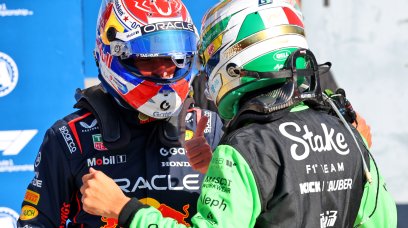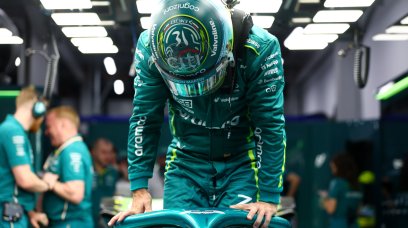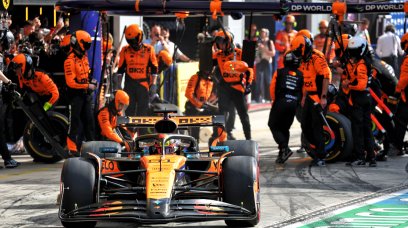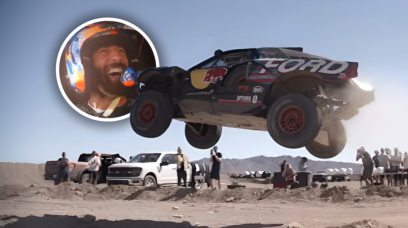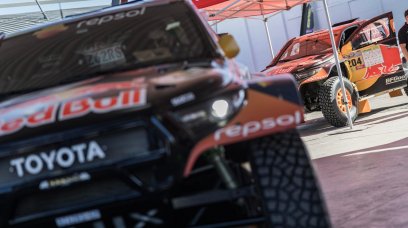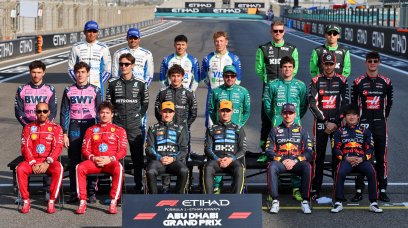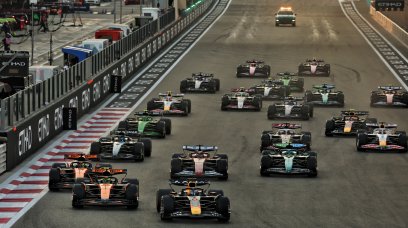The very fact that Fernando Alonso was able to continue in the United States Grand Prix after his high-speed shunt with future Formula 1 teammate Lance Stroll was astonishing. After getting airborne for a few seconds, Alonso thankfully landed wheels-side-up and after catching his breath, was able to limp home to the pits for repairs. He originally believed his race was over, but after the tyres and front wing were changed by his Alpine crew, he returned to the track. In typical Alonso fashion, he then stormed back through the field to claim a strong seventh place and six crucial points for Alpine in their battle for fourth in the Constructors' with McLaren. However, post-race, Haas lodged an appeal with the stewards against both Alonso and Sergio Perez of Red Bull. The team were unhappy and wanted consistency after both drivers were not given the black and orange flag for an unsafe car as Kevin Magnussen had been given multiple times in the 2022 season. Alonso's right mirror support was broken in the impact with Stroll, while Perez was carrying a broken front-wing end plate – as Magnussen had – but neither were called in to fix the problems. Perez's case was thrown out by the stewards, but Alonso was slapped with a 10 second stop/go penalty for having a car in an "unsafe condition", which was translated into a 30 second time penalty and dropped him to 15th. But in handing out this penalty the stewards have set a new precedent, one that will prove wildly unpopular.
Protest sets precedent
In their ruling, the stewards noted that they were "deeply concerned" Alonso was able to continue with the broken mirror. In his evidence, technical delegate Jo Bauer said he deemed the car to be unsafe with a mirror missing, something backed up by Nikolas Tombazis. The stewards felt that Alonso should have been given the black and orange flag, "or at least" a radio call to sort the problem before continuing. They also noted that Article 3.2 of the Sporting Regulations dictate that cars should be in a "safe condition" throughout a race and that Alonso wasn't, with responsibility falling on Alpine for that. However, while Alpine do share some responsibility in ensuring the safety of the car, as far as they, or any team in such a situation are concerned, the car was safe. It had four wheels pointing the right way, a front and rear wing and a driver capable of pointing it in the right direction. Teams are aways going to stretch the limits as far as they can and, given that there have been countless examples of mirrors falling off in the past, they would have seen no reason as to not carry on. If the equipment was deemed faulty, then it is the case of the referee to stop the player and ensure they are safe. Alpine are not at fault – instead it is Race Control who should have ordered Alonso in to fix the problem or retire the car. In their findings, the stewards also rejected Alpine's precedent case of Charles Leclerc in the 2019 Japanese Grand Prix, when the Monegasque drove the Ferrari for multiple laps with similar damage. Bits of the car then flew off and destroyed the following Lewis Hamilton's mirror. Both cars were deemed safe on that occasion.
Consistency is key
The one thing F1 teams crave above all else – winning aside – is consistency. No two situations are ever the same in F1, but a consistent outlook on how similar incidents are judged and penalised is all the teams and drivers want. There is no precedent quite like the last one, so let's assume that in Mexico City this weekend, someone suffers car damage with the mirror impacted. Under the Alonso precedent, this driver now needs to pit and retire the car. As Bauer said he believed the car was in an unsafe condition without two mirrors, simply removing the broken part would not suffice. It is impossible to fasten a new mirror structure in enough time to make rejoining the race plausible, so our driver will be forced into an early bath. Given that drivers such as Hamilton have continued on in the past without a mirror and received no indication of concerns from the FIA, the precedent change is a big one. It just adds more confusion to the Sporting Regulations, just when they could already do with a re-write following controversies in recent times.
Most read

